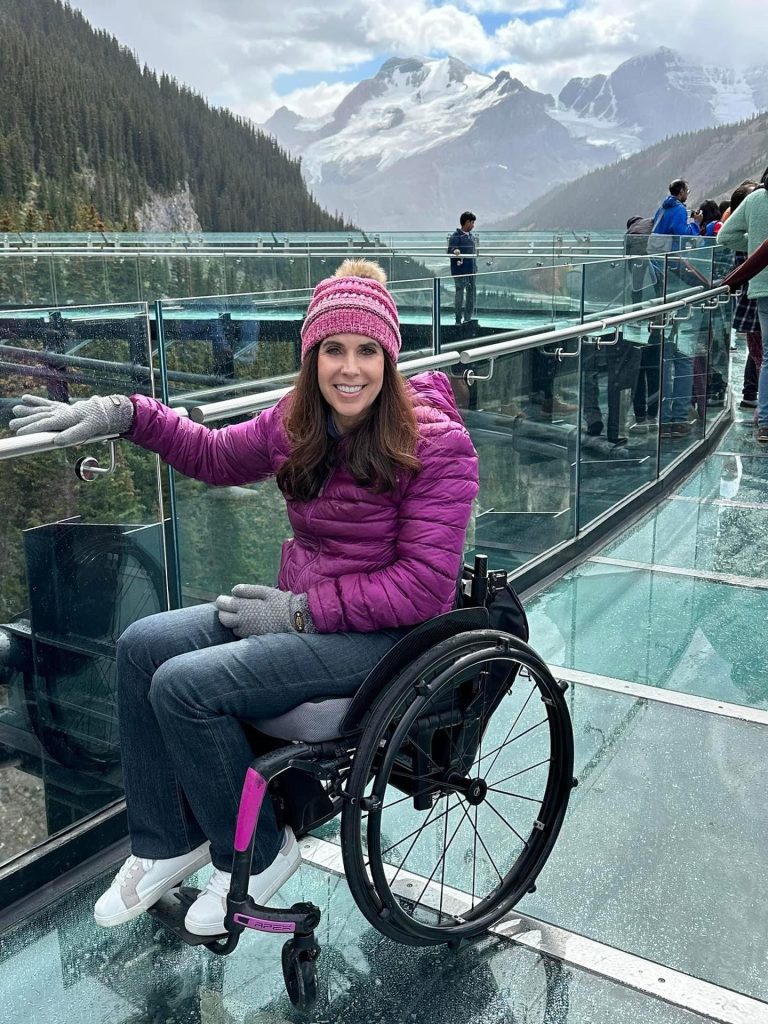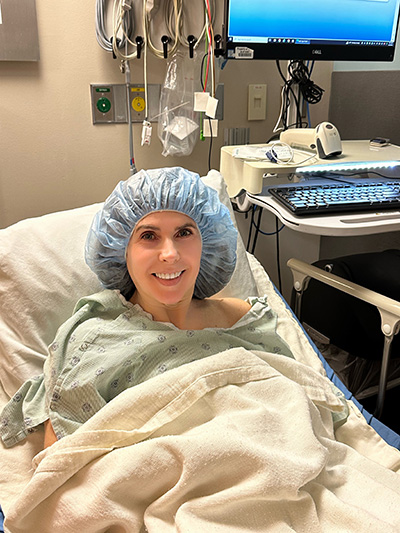By: Cheryl Angelelli

As a C6 incomplete quadriplegic, living with a neurogenic bladder can sometimes be overwhelming and exhausting, especially during the first couple years following a spinal cord injury. My diving accident happened when I was just 14 years old. I was still grappling with the idea that I would never walk again, so learning that my bladder and bowel would function differently now too, felt like another stake through the heart.
A neurogenic bladder can definitely impact your quality of life, general health, self-esteem, and your social, emotional and mental well-being. However, after 41 years as a spinal cord injury thriver, I have found ways to manage my neurogenic bladder in ways that allow me to live a full, active, and independent life.
Intermittent catheters
During the first few years of my injury, I was unable to catheterize myself independently, so I had an indwelling catheter. That was a time in my life where I felt the most frustrated with my bladder health and quality of life. The catheter would constantly leak, I would be somewhere in public and have to leave because I visibly wet myself, and I was constantly getting urinary tract infections.
Those experiences were a great motivator for me to learn to cath myself and I have been straight cathing for the last 38 years. I currently use Coloplast’s SpeediCath® Compact catheters. They have been a real game changer for me. Because I am a quad, I have to cath with two hands, and no matter how carefully I washed my hands before cathing, I was always touching a part of the 14” French catheter I was inserting into my urethra. With the SpeediCath catheter it has a grip handle, so I am never touching the catheter itself. Since I started using those years ago, I have never had another urinary tract infection (UTI). I also love that they are pre-lubricated and compact. I can fit 30 of them in the small pouch under my wheelchair.
Anticholinergics
Like most people with neurogenic bladder, the goal is to avoid leakage. In order to manage that, I take an anticholinergic daily. There are many different anticholinergic drugs on the market, so speak to your urologist about what might work best for you.
Botox injections
After I had been straight cathing for about 30 years my bladder function began to change. Since I am an incomplete quad, I can feel when I have to go, but suddenly I was having the urge to go more often, and when I did feel the need to go, I had to find a bathroom immediately. So that is when I began getting Botox injections in my bladder.
Most people are familiar with the use of Botox to help combat wrinkles and signs of aging, but Botox is also FDA-approved to treat urge incontinence or overactive bladder in people who have not had success with other treatment options. Botox works by stopping the bladder wall muscle contracting too much. This can reduce urinary frequency, urgency, and incontinence between cathing.
It is a simple and painless procedure that can be done in a doctor’s office or in the operating room under general anesthesia. I have had experience doing it both ways. I recently started doing it in the operating room because my doctor has access to a different needle in the hospital that can inject the Botox deeper into the bladder muscle.
When I’ve had the procedure done in the doctor’s office it takes about one hour. It starts with them placing a catheter with lidocaine into my bladder to numb the lining of the bladder. After 20-30 minutes when it is completely numb, a small scope which is connected to a camera (cystoscope) is placed into my bladder. This camera also allows my urologist to examine the inside of my bladder to see that everything looks normal. Then using a small needle that is passed through the scope, my urologist injects Botox in a pattern throughout the muscle of the bladder. I can feel each of the injections, but it does not hurt because the bladder is numb, however sometimes the poke of the needle triggers a muscle spasm in my legs that is a little painful.

The entire injection procedure only takes about 5 minutes. Once I am done and leave the office, I go right back to work since there is no downtime with this procedure. Sometimes when I cath the first one or two times after the procedure I may see a small droplet of blood which is completely normal. They say you may also have some minor cramping like when you start your period, but I have never experienced that. When I have the procedure in the hospital, it takes about three hours since they need time to prep me and start an IV to put me to sleep during the procedure. Because general anesthesia is used, you will need someone to drive you home.
My insurance covers the procedure and up to 300 units of medical Botox. They say it can sometimes take up to two weeks before you start noticing a difference. For me, usually after a week I notice a reduction in my frequency, and I am able to hold it longer when I do need to go. The effect of Botox in the bladder is not permanent. When I first began Botox injections, my results would last 6-8 months. In the last couple of years, after 11 years of consistently doing it, I was only seeing the benefits for 4-5 months. I took a year off to hopefully give my body a break and a reset, so I am curious to see how long my most recent treatment will last.
It is important to note that these are my own personal experiences, and each person’s situation and condition may result in a different experience or outcome.
Maintaining overall bladder health
Living with a neurogenic bladder also means staying on top of your bladder health. For me that starts with having a great urologist. It took me a long time to find my current urologist. I wanted someone who was board-certified in urological surgery; had experience working with individuals with a spinal cord injury; someone who worked in an academic setting and kept abreast of the latest research, and someone who considered me part of my care plan and decision making.
In addition to regular check-ins with my urologist, she also has me do a renal ultrasound yearly. The ultrasound helps identify any abnormalities or changes in my bladder and kidneys. I also have periodic urodynamic studies that measure how much urine my bladder can hold, the pressure within my bladder, how well urine flows, and how well my bladder empties when it is full. Special sensors are placed on your skin near your urethra or rectum to see if the muscles and nerves are working properly. All of these diagnostic tests are very important because persons with a spinal cord injury have an increased risk of renal deterioration and urinary tract complications.
And finally, don’t forget drinking water is the best option for your bladder and general health.
–
I received compensation from Coloplast to provide this information, but reviews and opinions are my own. This information is for educational purposes only and should not be interpreted to contain treatment recommendations. Each person's situation is unique so your experience may not be the same. You should rely on the healthcare professional who knows your individual history for personal medical advice and diagnosis.
SpeediCath® Compact catheters are prescribed for use by patients who require bladder drainage due to chronic urine retention or post void residual volume (PVR). Before use, carefully read all of the instructions. Call your doctor if you think you have a UTI or can't pass the catheter into the bladder. For more information regarding risks, potential complications and product support, call Coloplast Corp. at 1-866-226-6362 and/or consult the company website at www.coloplast.us. Prior to use of SpeediCath or other product, refer to the product 'Instructions for Use' for intended use and relevant safety information.